Why you can trust Tom's Hardware
The above MSI RTX 4090 Suprim Liquid X unboxing video will give you a good overview of what you get with the card. Besides the card itself, MSI includes a silver-white Suprim mouse pad, and that's about it.
The card and radiator together weigh 2336g, or 2395g if you include the 'quadropus' 8-pin to 16-pin adapter. But if you look just at the graphics card (minus the radiator) it's only around 1350g (+/-50g from the tubing). That's a lot less potential weight on the IO bracket and PCIe slot, and of course the card only occupies two slots instead of the 3+ slots we're seeing on most other 4090 models.
The card dimensions are 280 x 139 x 42mm, while the radiator measures 275 x 117 x 54mm. The tubing between the card and radiator is about 44cm (17 inches) long, which should give you plenty of options for how to install the radiator in a larger case, but might get in the way for smaller Micro ATX builds.


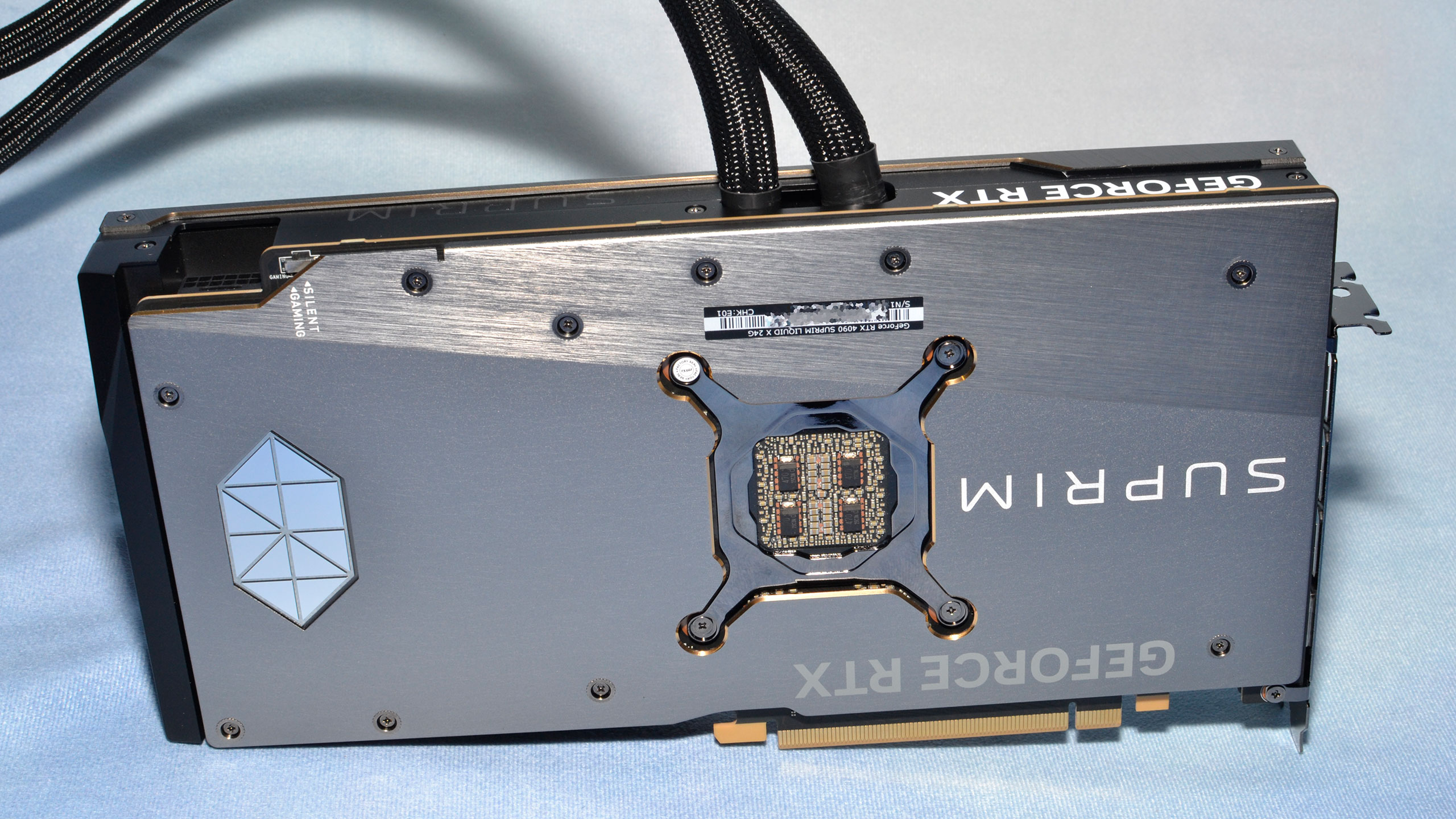
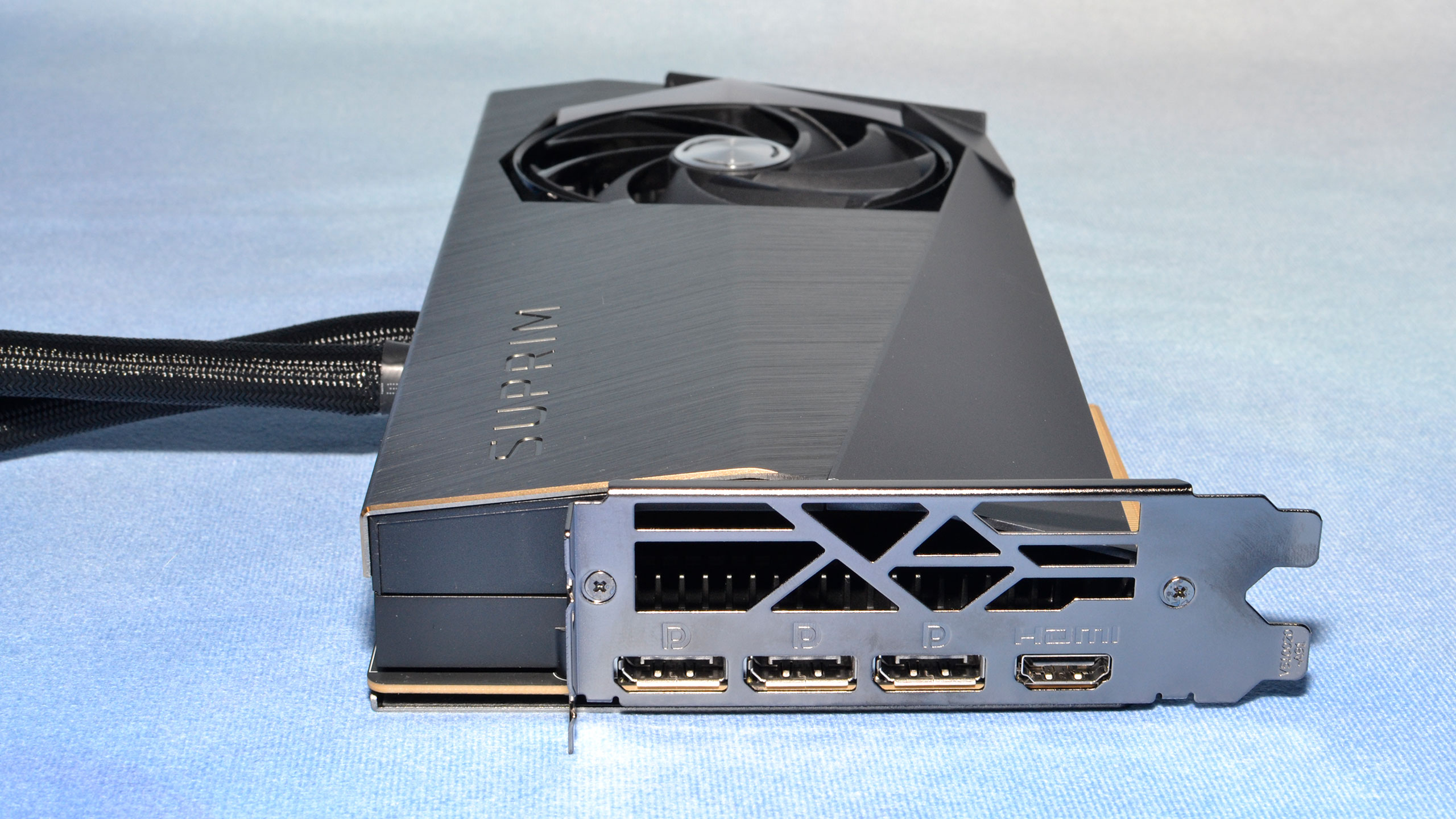

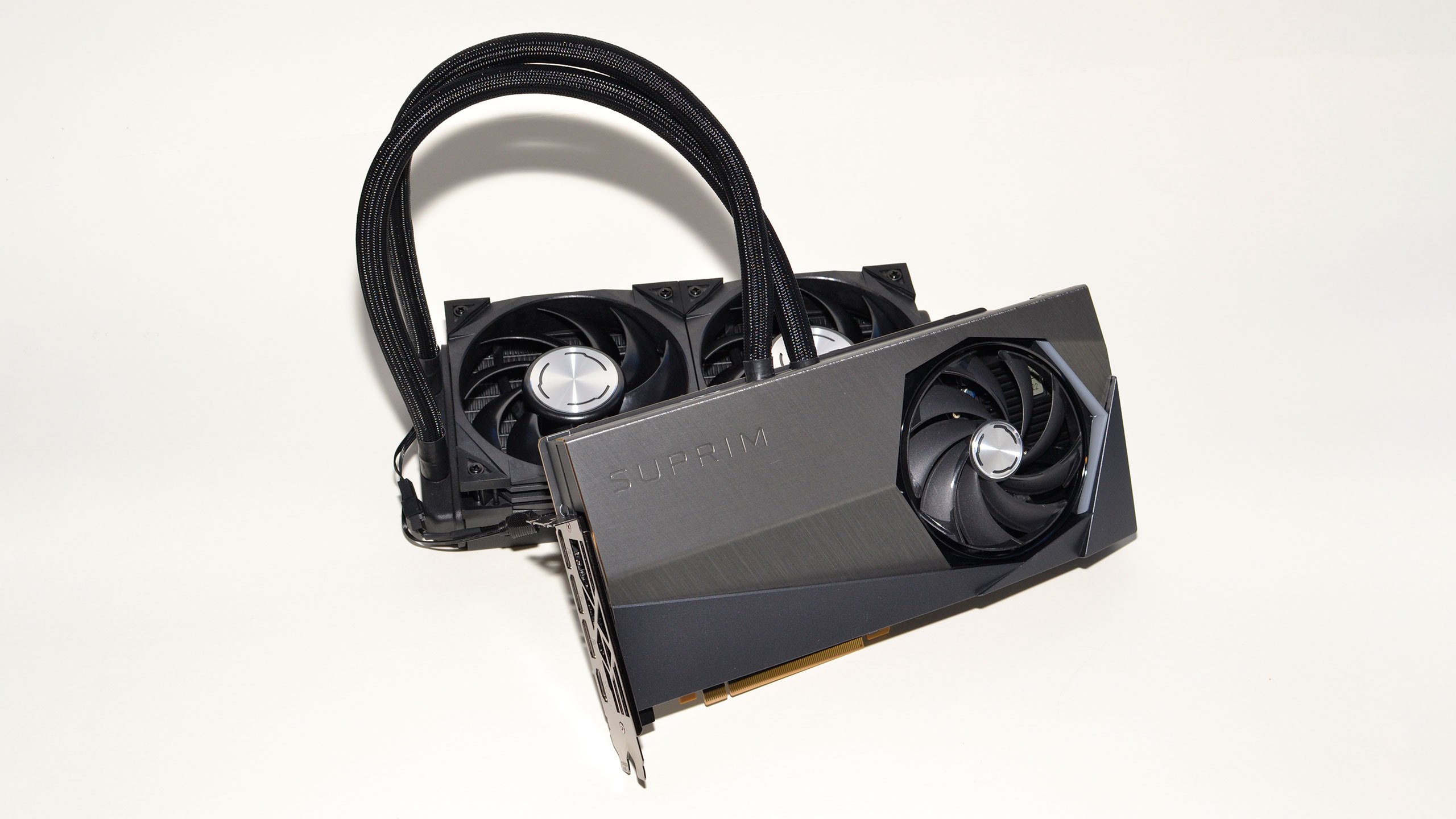

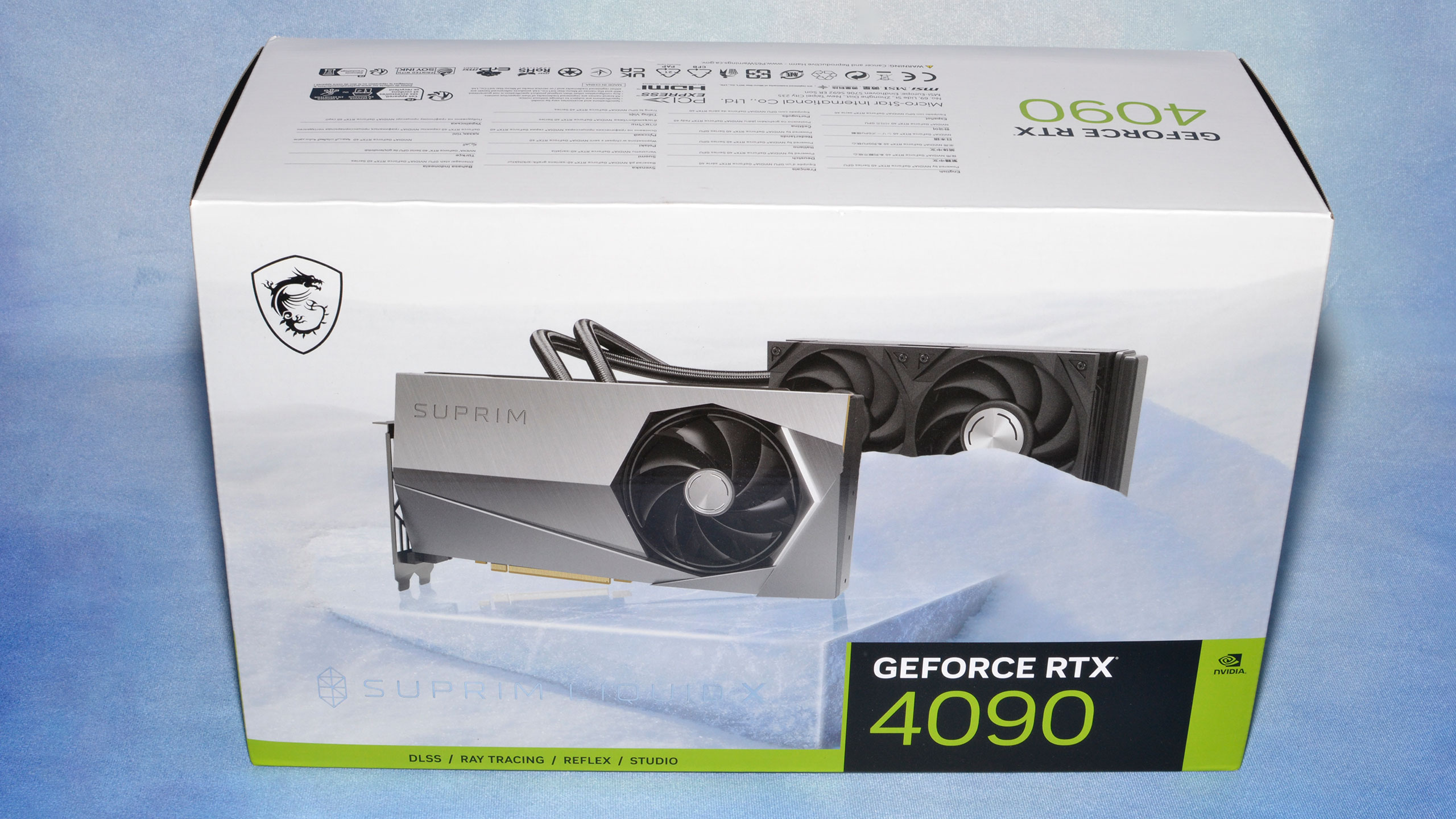

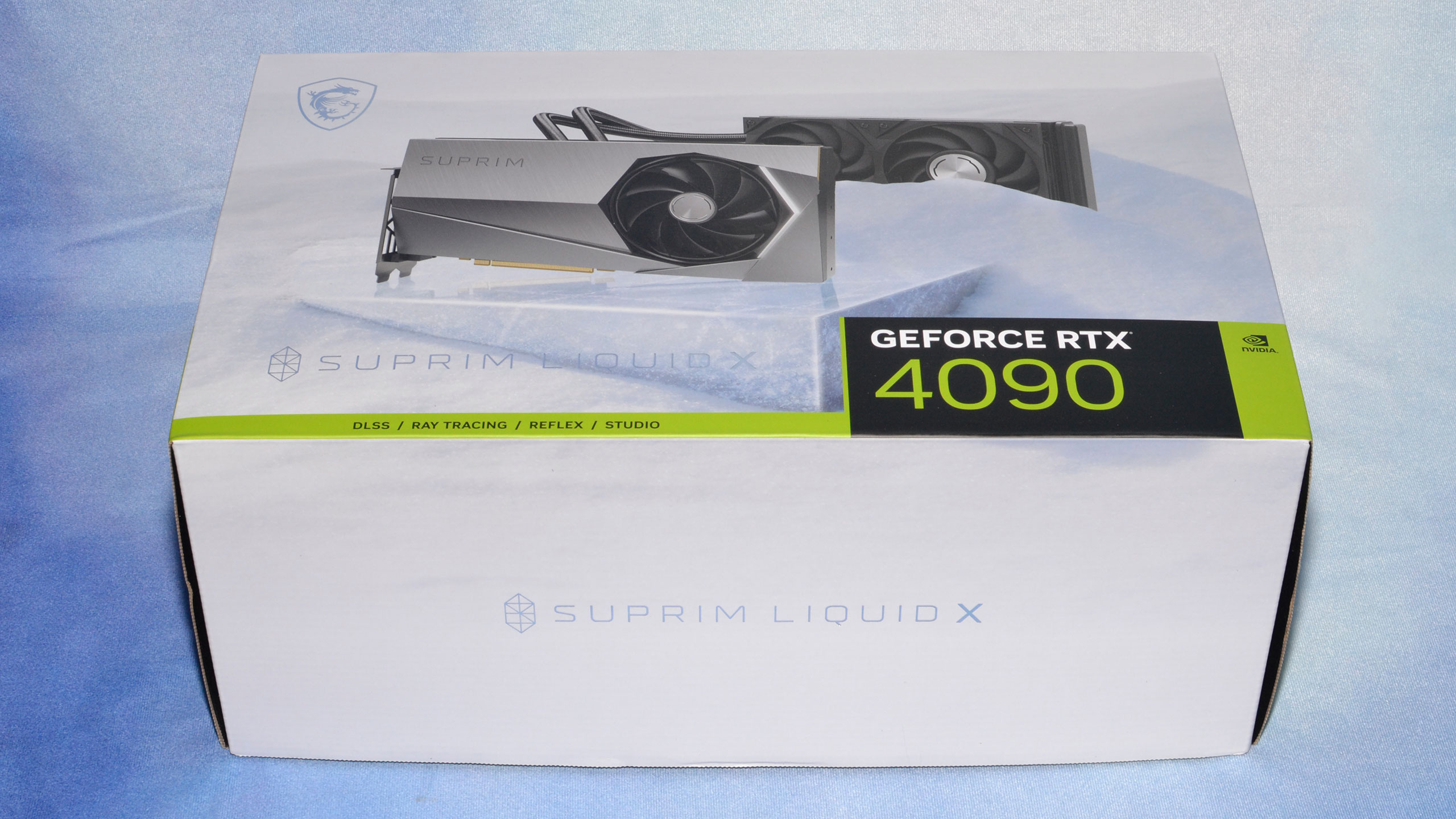
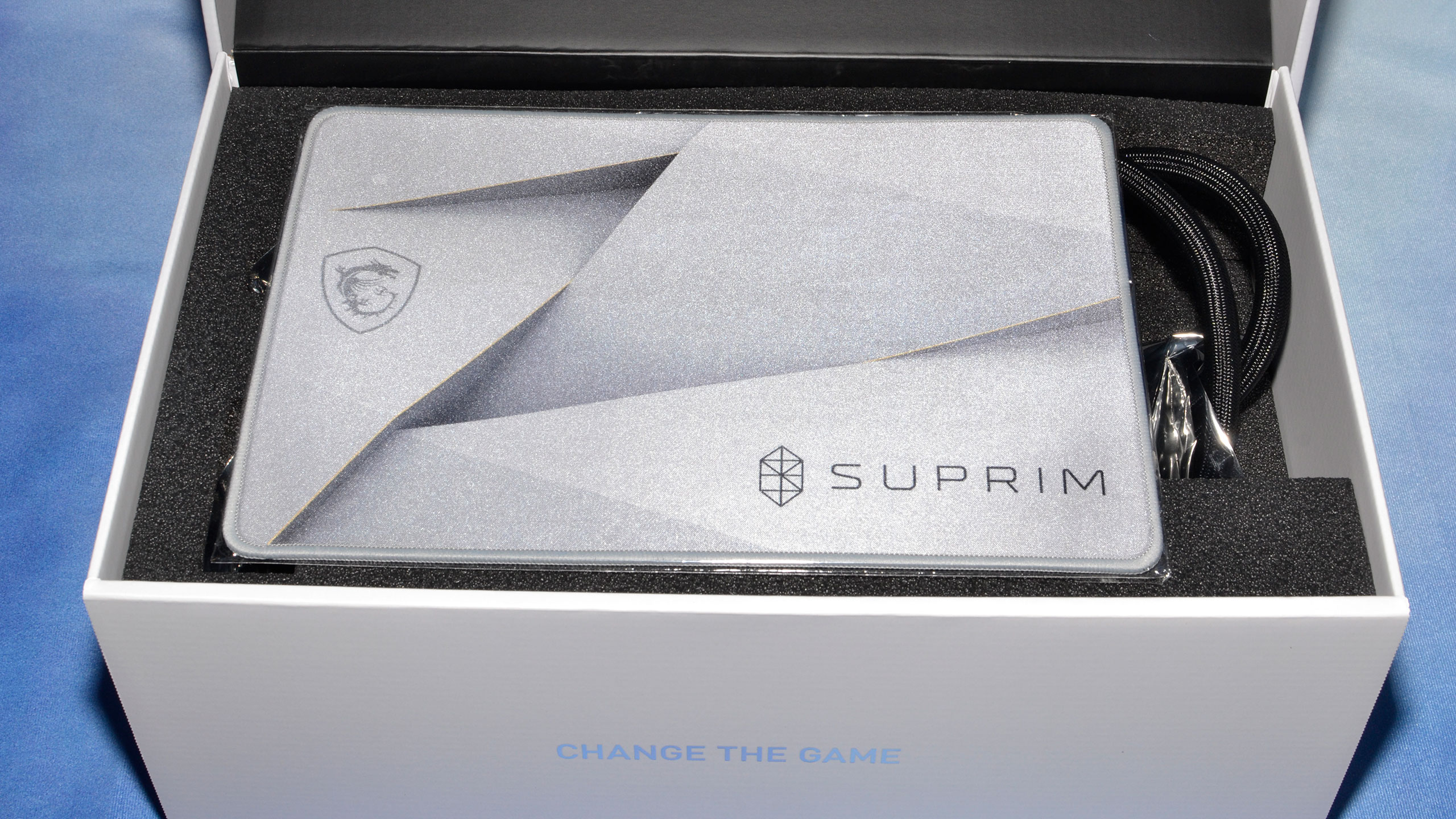
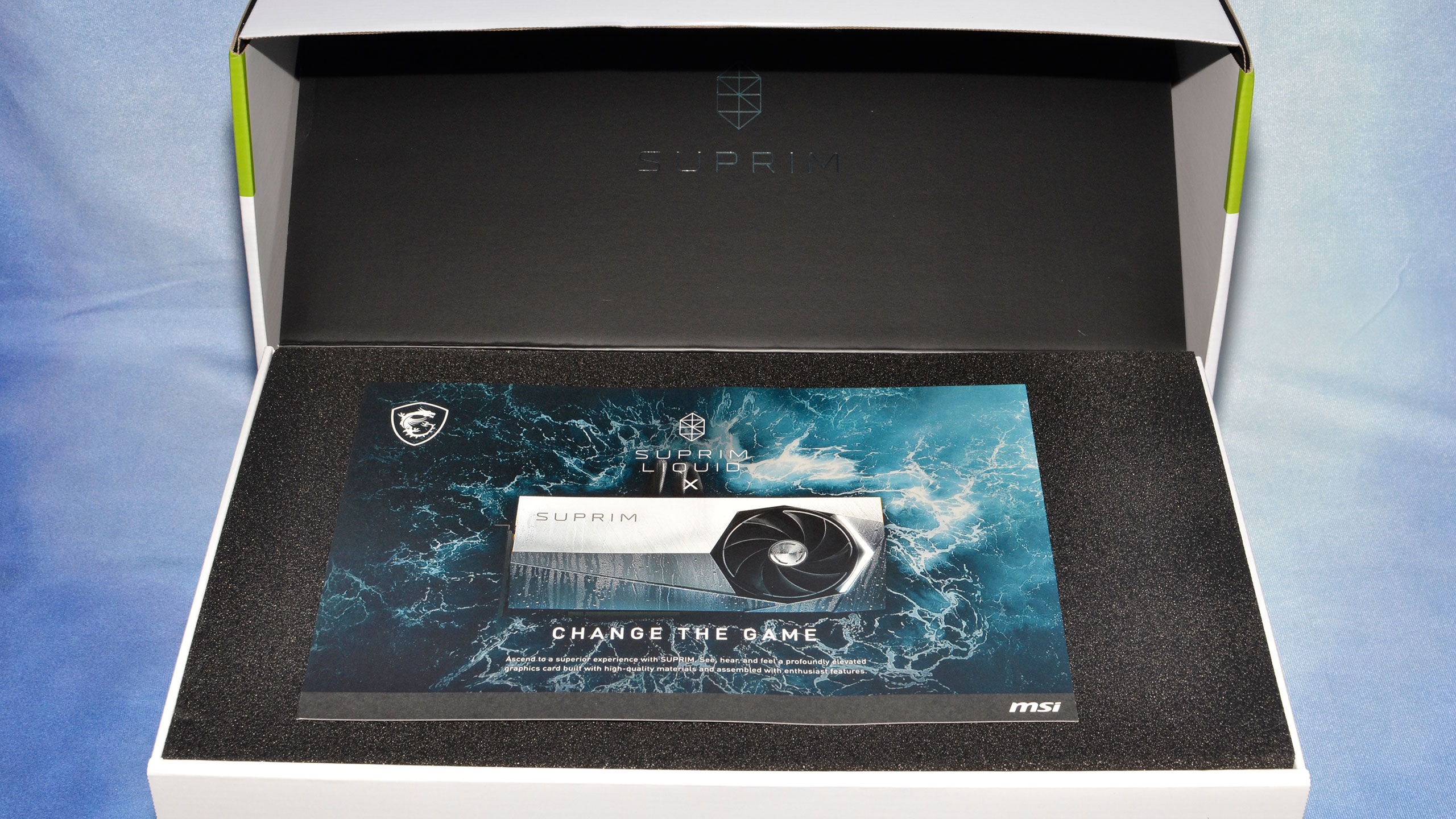
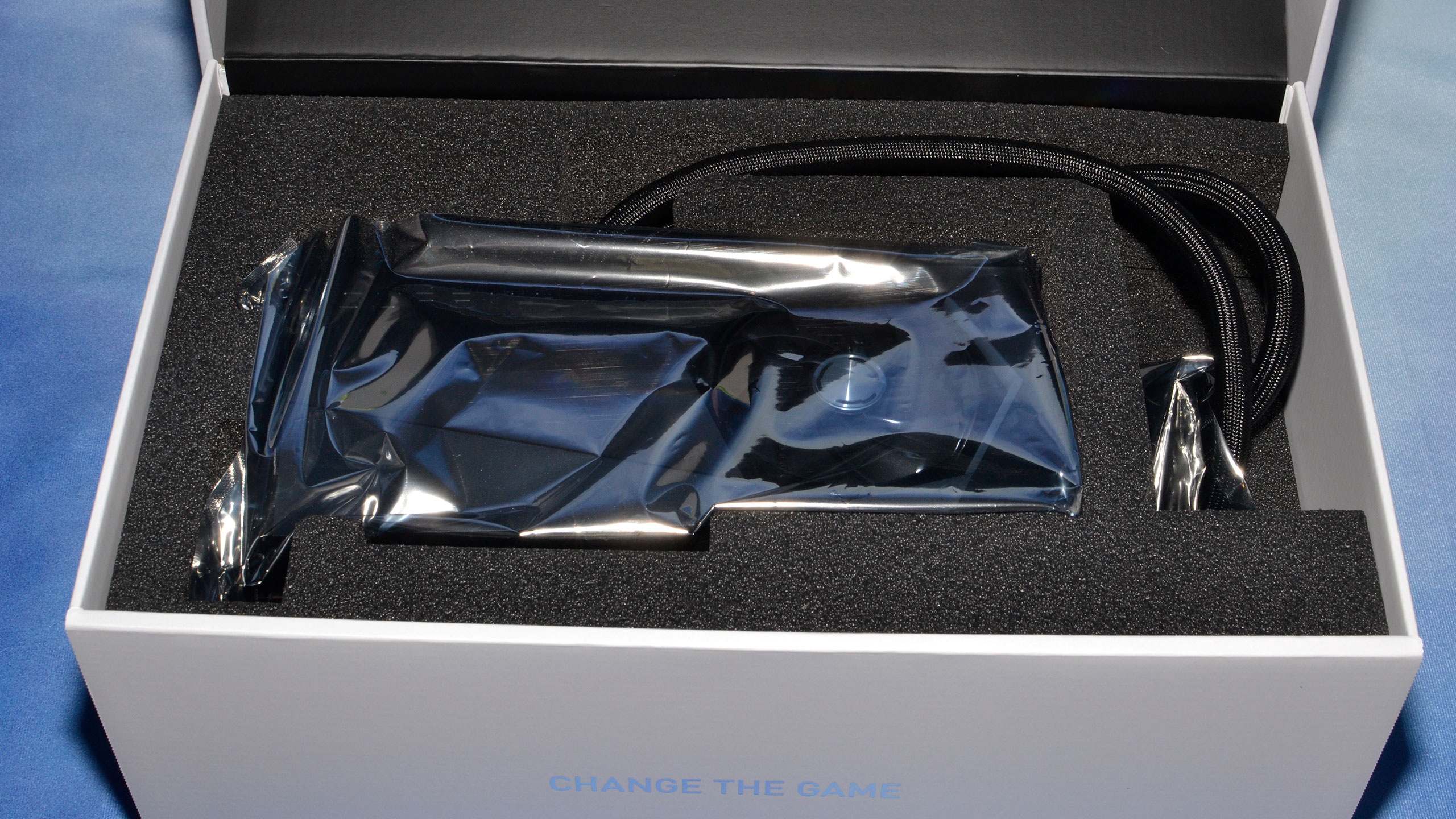

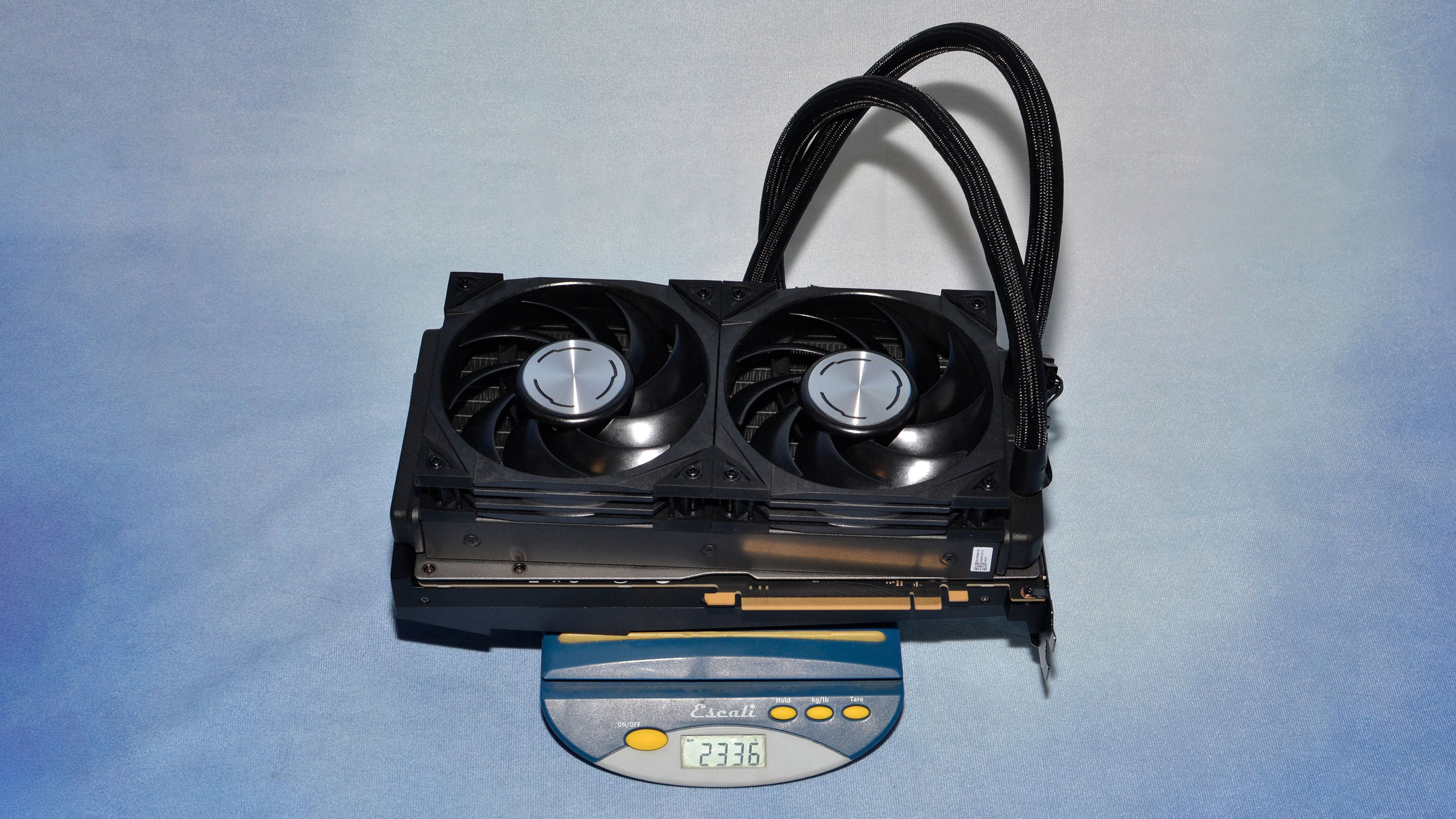

With the 240mm radiator, there are obviously dual 120mm fans helping to keep the card cool. The fans are 26mm thick and use standard 4-pin connectors, so if you wanted to replace them with something else — or add two more fans in a push-pull configuration — you can certainly do so. (Extra fans would need power from somewhere else most likely, unless you want to add your own splitters.)
Besides the radiator fans, there's also a custom 95mm fan on the card, near the back and located over the VRMs and power circuitry. It's not clear how much this fan contributes to cooling, as the main plate for the AIO cooling covers the GDDR6X memory and GPU, but it should move enough air to ensure the VRMs don't overheat. One thing it won't do much if at all is push air out the IO exhaust vents. The waterblock and pump will block most of the airflow in that direction.
Otherwise, the MSI card takes a pretty traditional approach. There are three DisplayPort 1.4a outputs and a single HDMI 2.1 port, just like most other RTX 4090 cards. Power comes via a 16-pin 12VHPWR connector, and the card includes the aforementioned quadropus adapter that we've seen with every 4090 card.
There's a modest amount of RGB lighting as well, naturally. On the "front" of the card (with the fan, which will normally face downward in most cases), there's a chevron near the end of the card that lights up. On the top of the card, the "Suprim" logo also lights up — and pulses by default. Finally, on the card backplate is a diamond-shaped cutout that lights up. It looks as though there are metal 'stickers' on top of a larger LED panel, but only the uncovered lines visibly light up.
All things considered, it's a nice looking card, with a brushed aluminum shroud and backplate that conveys the premium aesthetic, assuming you go in for the water-cooled look.
- MORE: Best Graphics Cards
- MORE: GPU Benchmarks and Hierarchy
- MORE: All Graphics Content
- MORE: Best Graphics Cards
- MORE: GPU Benchmarks and Hierarchy
- MORE: All Graphics Content
Get Tom's Hardware's best news and in-depth reviews, straight to your inbox.
Current page: MSI RTX 4090 Suprim Liquid X: Design, Teardown and Overclocking
Prev Page MSI RTX 4090 Suprim Liquid X Review Next Page MSI RTX 4090 Suprim Liquid X Teardown
Jarred Walton is a senior editor at Tom's Hardware focusing on everything GPU. He has been working as a tech journalist since 2004, writing for AnandTech, Maximum PC, and PC Gamer. From the first S3 Virge '3D decelerators' to today's GPUs, Jarred keeps up with all the latest graphics trends and is the one to ask about game performance.
-
Ltsmba $150 extra for essentially 0 performance gain over the FE 4090. So it takes up a little less space in the case, and looks a little more sleek. I'd probably pay $50 extra for that, but definitely not $150 (more actually for some people who bought it when MSI raised the price even higher temporarily).Reply
I thought the point of a water cooled card was to push the limits of what the GPU could do, but it seems its more of a limitation of how much power you can put into the 4090, not how hot its getting.
Water cooling on these things kinda seems completely overkill, unless i'm missing something, which I might be.
Even if I am missing something, I feel bad for anyone who paid a premium for this card and is getting no boost over the FE 4090... -
Phaaze88 It's technically still a 4-slotter, just split in half, with the 2 halves connected by 470mm long tubes. Depending on how you look at it, it's actually larger than some air cooled models...Reply
Msi seems to have slipped up on the contact pressure, because both Kitguru and Paul's HW show the memory being rather warm...
The cards are hard voltage limited by Nvidia. Previously, they were power limited.Ltsmba said:Water cooling on these things kinda seems completely overkill, unless i'm missing something, which I might be.
Without DIY voltage modding, there isn't much on the table. So AIB models don't offer much more than aesthetics compared to the FE. -
Ltsmba That's good to know that it's a voltage limit rather than a power limit.Reply
I guess even so, it ends up being the same result, no benefit to buying a more expensive AIB model.
It's looking more and more clear why EVGA bailed -
A Stoner While performance wise it might not be a gain, if it reduces actual temperatures, then you will be bleeding less heat into your computer room. Not sure if that is the case here, but I am currently running the same watts on my old newer computer than my older old computer and the newer one causes far less heat buildup in the room. The reason is that the CPU and GPU run at much lower top temperatures than the older ones. I think my CPU tops out at 75 water cooled and the GPU at 92. The older one is 100 CPU water cooled or air cooled and 105 GPU.Reply -
JarredWaltonGPU Reply
I thought I included this, but perhaps not. Across the gaming test suite while manually overclocked, I got a maximum GDDR6X temperature of 82C on the MSI card, I think 78C on the Founders Edition, and 72C on the Asus card. Considering how hot 3090, 3080 Ti, and 3080 cards could get on the memory (100-110C), I find 82C temperatures quite nice and am not particularly worried about them. GPU temps do favor the MSI card over the Founders Edition (57.8C MSI compared to 66.9C on the FE), so by that metric MSI "wins." It's just not a particularly important metric IMO, provided the card runs well under 80C GPU and 90C VRAM.Phaaze88 said:It's technically still a 4-slotter, just split in half, with the 2 halves connected by 470mm long tubes. Depending on how you look at it, it's actually larger than some air cooled models...
MSI seems to have slipped up on the contact pressure, because both Kitguru and Paul's HW show the memory being rather warm. -
Phaaze88 Reply
I'm aware that it's well within spec and not something I'd be worried about either.JarredWaltonGPU said:I thought I included this, but perhaps not. Across the gaming test suite while manually overclocked, I got a maximum GDDR6X temperature of 82C on the MSI card, I think 78C on the Founders Edition, and 72C on the Asus card. Considering how hot 3090, 3080 Ti, and 3080 cards could get on the memory (100-110C), I find 82C temperatures quite nice and am not particularly worried about them. GPU temps do favor the MSI card over the Founders Edition (57.8C MSI compared to 66.9C on the FE), so by that metric MSI "wins." It's just not a particularly important metric IMO, provided the card runs well under 80C GPU and 90C VRAM.
It's just, for a liquid cooled model, one would expect improvements across the board compared to air models, but the Suprim Liquid X fails to accomplish this.
I look at this thing and I'm like, "What's the selling points of this thing? What kind of excuses can I come up with to make this a welcome addition to my PC?"
"That's a clean looking gpu shroud." That's it.
I'd personally just get the FE and customize that. -
PlaneInTheSky ReplyAIO liquid cooling doesn't trump large air coolers
Why would it, air coolers today are liquid coolers. There is liquid in those heat pipes.
Air coolers offer liquid cooling in a perfectly optimized closed heatpipe loop that can't leak, there is nothing that can compete with that. -
pixelpusher220 ReplyPlaneInTheSky said:
Why would it, air coolers today are liquid coolers. There is liquid in those heat pipes.
Air coolers offer liquid cooling in a perfectly optimized closed heatpipe loop that can't leak, there is nothing that can compete with that.
It's not active flow though is it? It's heat driven, and sure there's a lot of it, but that's still not the same as actively pushing a larger volume of liquid through the same surface area. -
JarredWaltonGPU Reply
The reason that's a con is because if liquid cooling isn't better, why should you pay extra for it? It's not a question, it's a statement: AIO liquid cooling generally isn't better than a large air cooler, but it does cost more and it involves a lot more moving parts (in the pump). Also, AIO loops can still lose liquid over time, which means that in 5-10 years these AIO cards may not even work properly. I still have an R9 Fury X kicking around and let me tell you, powering that thing up sounds like the pump is going to kick the bucket and that there's a lot of air in the loop now. Air coolers from the same generation don't have that problem. So yes, the fact that an AIO can't clearly beat air cooling is a many pronged problem that I condensed into a simple statement.PlaneInTheSky said:Why would it, air coolers today are liquid coolers. There is liquid in those heat pipes.
Air coolers offer liquid cooling in a perfectly optimized closed heatpipe loop that can't leak, there is nothing that can compete with that.
